POSTED ON
The Amazon is important for the leather industry
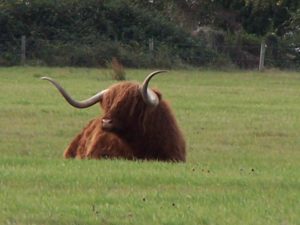
One highlight of the summer has been the publication of the Greenpeace report “Slaughtering the Amazon” and the way the leather industry has reacted to. We had always thought that cutting down the rain forest was about illegal logging but it turns out that grabbing land for cattle ranching has actually been the number one culprit. This was not unknown as a number of refereed papers have been written about the issue, but it has taken the Greenpeace report to make people look up. The first tanning industry response was in the manner of “let’s have a chat after the holidays and when we all get back from Shanghai”, and the Brazilian industry approach was that everything was legal, followed after some pressure by an agreement to not take hides from land taken against the law. However the major footwear brands in the world, which had been made the focus of a sustained public relations and email campaign by Greenpeace, actually demanded a proper and prompt resolution. This has now been achieved. The latest announcement from Greenpeace is below and is a major milestone for the industry.
It is the first very prominent reminder to tanners that this is a small planet, and that cattle populations cannot expand forever. Cows use a lot of land. A thought for the future. And tanners had better be more aware of these bigger picture elements.
I have also added the links to the press releases of each of the companies who have already made moves. Other brands were also mentioned so expect future to see future announcements.
Brazilian Leather Giant Commits to Amazon Cattle Moratorium Following Industry Pressure
Tough new sourcing policies from Clarks and others said to be instrumental in decision
13th August, 2009
One of the world’s largest leather suppliers, and Brazil’s second-largest beef exporter today backed Greenpeace’s call for a moratorium on the purchase of cattle from farms involved in new deforestation in the Amazon with immediate effect.
Bertin’s announcement follows tough new policy statements from shoe retailers such as Clarks, Nike, Timberland, Geox and Adidas, in response to a Greenpeace report entitled Slaughtering the Amazon, which was released in June.
The report traced leather, beef and other cattle products from ranches involved in the destruction of the Amazon Rainforest back to top brands’ supply chains.
The cattle giant now joins Marfrig, the fourth-largest producer of beef and beef products in the world, which adopted a similar commitment in July.
“Bertin’s decision should pave the way for the modernisation of the Brazilian cattle industry”, said Sarah Shoraka, Greenpeace Forests campaigner.
“Given the sheer size of both Bertin and Marfrig’s operations, this commitment will have real impact on driving down Amazon deforestation and greenhouse gas emissions. Greenpeace will closely monitor the moratorium’s implementation to ensure its success”, said Shoraka.
In the next 180 days, Bertin will register and map all fattening farms which supply cattle directly to the company. For the rest of the supply chain, including rearing and nursery farms, Bertin believes that it will require two-years to implement a traceability system from farms to its slaughterhouses and processing facilities.
The company will also ensure it is not buying cattle from indigenous and protected areas or from farms linked to slave labour, land conflicts and land grabbing.
Marfrig and Bertin’s commitment to end Amazon deforestation has isolated Brazilian JBS-Friboi, the world’s largest producer and global exporter of processed beef. Contrary to its competitors, JBS-Friboi is staying silent on the issue and is expanding into the Amazon having rented several new facilities north of Mato Grosso State, an area which has the greatest rate of cattle ranching expansion and deforestation in the Amazon.
“JBS-Friboi must accept its responsibilities and stop fuelling Amazon destruction. It needs to join these companies in protecting the rainforest now,” said Shoraka.
Brazil’s entire cattle sector urgently needs to follow the soya industry’s example and commit to a moratorium on expansion into newly deforested areas. Both the federal and state governments must ensure this is possible by mapping, registering and monitoring rural properties, helping the private sector to fulfil its corporate liabilities. Cattle ranching is the biggest driver of Amazon rainforest destruction and contributes to making Brazil the fourth largest climate polluter in the world.
Fernando Bertin, CEO of Bertin, S.A. said:
“Environmental responsibility is increasingly relevant for a company like ours to maintain and enhance its position in Brazil and abroad. Today, we are making a fundamental step.”
For companies’ commitments see:
Mike Redwood
16th August 2009POSTED ON
Coming Home
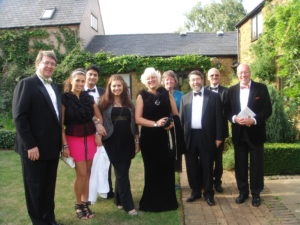
Spectacular! That is all you can really say about the Leather Centenary weekend Dinner which with a short fashion show and lifetime awards ceremony was a memorable event, even leaving time after for drinks in the bar at the hotel to unearthly leather hours. Dinner was preceded by a cocktail get together where a mysterious (but tasty) blue beverage was served, allowing typical tanners’ jokes about CrVI.
There was pretty much a full house in the big tent that had been used during the week for the University Degree ceremonies. It was good that the dinner was actually on the Campus. Guests came from far and wide and included local characters such as Colin Jones, Robert Sykes and Michael Pearson and those from overseas including Johannes Borge from Norway, Mr May from Switzerland and Michael Duck from Hong Kong
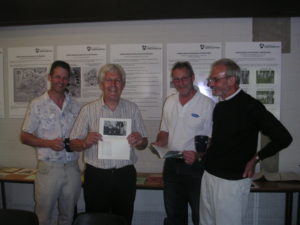
It was a full three day event starting with the Beast to Beauty conference on the Friday and ending on the Sunday with lunch at Leathersellers Hall in London There were many memorable moments that stand out from the networking cocktail party in the Shoe Museum on the Friday to the “anti-networking” socialising that went on in the leather department on Saturday as everyone casually got together and met old friends. There was an organised set of tours on the Saturday which covered the BSLT, the LCC, a museum of leathercraft exhibition on the other campus and the shoe museum in town. But it was the morning in the BSLT which was particularly enjoyable. The staff had opened up the partition {for the last time as it is now being removed in the refurbishment) to combine the reception area with the lecture room and used the space to layout old photos and booklets about the school. Coffee was drunk. The organised and the casual groups intermingled: old friends were discovered, new acquaintances made and many happy searches made for names on boards, in booklets and old photos unearthed. And, of course, despite all the trials and tribulations everyone agreed the leather industry had not been a bad place to have made their careers.
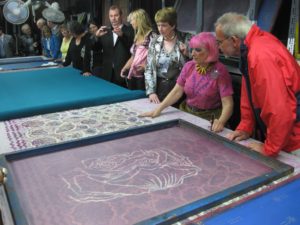
Not everyone could attend the very successful Beast to Beauty conference as it clashed with the Degree Ceremony but most got together in the evening. More importantly a high proportion of the attendees stayed over for the whole weekend.
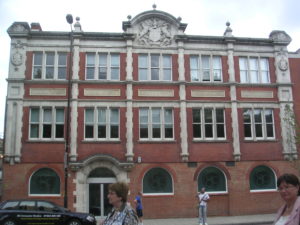
Sunday was the big surprise with a visit to Zandra Rhodes studio and apartment in Bermondsey. We knew we were off to Bermondsey to see the old leathersellers college in Towers Bridge Road and some of the old haunts nearby but I don’t think many of us had appreciated that the Fashion School had arranged this trip. This was a real highlight as Zandra Rhodes gave us an excellent tour demonstrating how she works with screen printing (increasingly important with leather) and then took us up to her apartment above for tea.
The archivist at Leathersellers Hall gave two excellent tours of the hall and has clearly unearthed some fascinating history. His new booklet on the Leatherettes Company is a very good read.
Michael Redwood
5th August 2009